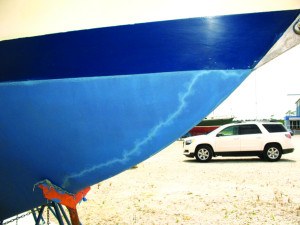

The odds of getting struck by lightning are about one in a million. But if you own a boat, the odds of it being struck by lightning are significantly higher – about one in a thousand. However, not all boats are created equal when it comes to lightning. A just-released analysis of 10 years of insurance claims by Boat Owners Association of The United States (BoatUS) shows that certain boats are significantly more at risk than others.

It’s a no brainer why monohull sailboats with their tall masts pointing to the sky have significantly more lightning claims than powerboats – 3.8 chances per 1,000 versus a 0.1 chance in 1,000 for bass boats-runabouts-pontoons. The national average for the probability of a boat lightning strike claim for all types of boats and sizes is 0.9 chance per 1,000.
Larger boats of all types – which present a larger target to the skies – are struck more often than smaller ones. A boat 40-65 feet in length has 6 chances per 1,000 while boats 16-25 feet have just a 0.2 chance per 1,000. Increasing the height of a sailboat mast from 35 to 45 feet nearly triples the odds of being hit.
Where boating populations are dense and lightning is common, strike insurance claims are high. Six of the top 10 states in terms of frequency of lightning claims – Florida, Mississippi, Louisiana, Alabama, South Carolina and North Carolina – all lay within the thunderstorm hotspot in the Southeast and midsection of the country. Heading west, the frequency of lightning claims falls to about 1 chance in 10,000 along the Pacific Coast, or about 1/10th the national average.
A multihull sailboat is almost twice as likely to have a lightning claim as a monohull. But this is true only for sailing craft – the frequency of pontoon boat lightning claims is well below average. Why sailing cats get hit more is unclear, although theories include lack of a keel, more wetted surface, larger footprint, the dockage of cats at the outside edges of a marina, and higher average mast height.
According to Boat US Marine Insurance claims analysis, more than 75 percent of lightning claims during the past 10 years were for less than 30 percent of the insured value of the boat. Most of the claims involved damage to electronics.
Source: BoatUS